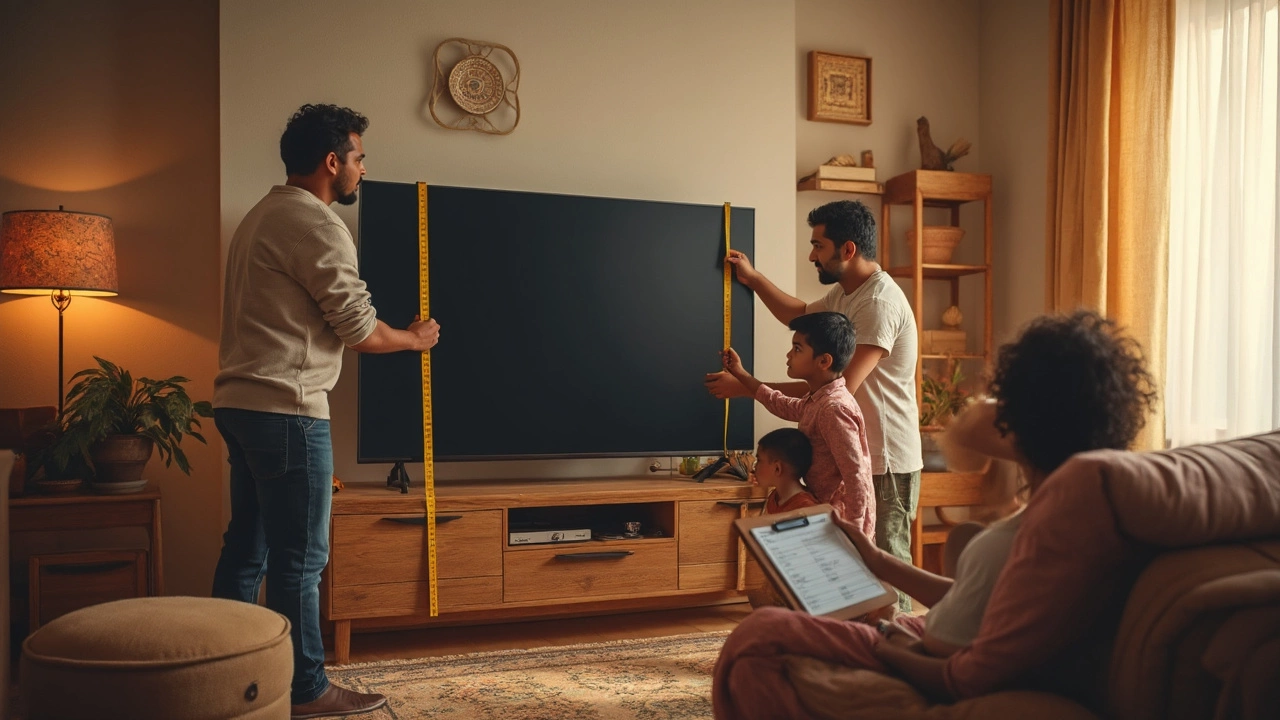TV Mounting Made Simple: Hang, Height, and Safety in Minutes
Got a new flat‑screen and wondering whether to slap it on the wall or keep it on a stand? You’re not alone. Mounting a TV can feel like a DIY nightmare, but with the right plan you’ll have it up, safe, and at the perfect viewing height in no time.
Pick the Right Mount for Your TV
First thing: check the VESA pattern on the back of your TV – those four holes in a square give you the mount size you need. If you have a 55‑inch screen, a 200x200 mm pattern is common; a 65‑inch usually needs 400x400 mm. Choose a mount that supports your TV’s weight and size. Fixed mounts keep the screen flat, tilting mounts let you angle it down, and full‑motion arms swing left and right – perfect for a corner room.
Find the Ideal Height and Placement
Most experts say the center of the screen should sit about eye level when you’re seated. Measure the distance from the floor to your couch’s eye line (usually 42‑44 inches) and subtract half the TV’s height. That gives you the sweet spot for the mount’s center. Use a stud finder to locate wall studs – they’re the only places you should anchor a heavy mount. If you can’t hit a stud, a toggle bolt set works, but it’s not as sturdy for larger screens.
Don’t forget the viewing distance. A 55‑inch TV looks best about 7‑9 feet away, while a 65‑inch wants 8‑10 feet. Position the mount so you’re within that range; you’ll avoid eye strain and get a clean picture.
When you run the cables, keep them tidy. Most mounts have a small gap behind the TV for power cords and HDMI wires. If you’re hiding them inside the wall, make sure you use a rated in‑wall power kit – it meets safety codes and keeps the setup neat.
Before you drill, mark the drill holes twice. A small pilot hole helps keep the screw straight and reduces the chance of splitting the stud. Use a level to confirm the mount is perfectly horizontal; a tilted screen looks cheap, no matter how good the TV is.
Once the mount is secured, attach the TV brackets to the back of the screen. Most brackets have a “one‑hand” locking mechanism – pull the latch, lift the TV onto the mount, and lock it in place. Give it a gentle wiggle to double‑check it’s solid.
If you prefer a stand, pick one that matches your TV’s width and can hold its weight. A good rule of thumb: the stand’s top should be no higher than the TV’s center when you’re seated. This keeps the viewing angle comfortable and prevents neck strain.
Finally, test the setup. Turn the TV on, play a video, and sit in your usual spot. Adjust the tilt or height if needed – small tweaks make a big difference. And always keep the remote handy; you’ll want to fine‑tune the picture after the mount is in place.
Mounting a TV isn’t rocket science, but it does need a bit of planning. Follow these steps, stay safe, and enjoy a clutter‑free living room with a screen that looks great from every angle.
At What Height Should a 50 Inch TV Be Placed? Smart Guidelines for Viewing Comfort
Figuring out the right height for a 50 inch TV can be trickier than it looks. This article breaks down everything you need to know to pick the perfect height, so you don't end up craning your neck or squinting at the screen. From expert-backed measurements to tips for awkward living rooms, every detail is covered. Learn the best tricks for mounting, using stands, and getting a spot-on setup, whether it's family movie nights or weekday binge sessions. A quick read that makes your viewing experience comfortable and stress-free.





